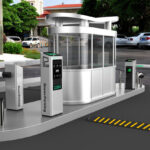To succeed in the global landscape, businesses have to invest in building a multilingual brand presence. Brand localization is becoming more critical to achieving your business expansion goals. And to make it happen in the most effective way possible, you need a professional translation management system. However, choosing the right localization management platform for your brand localization project is not an easy task. There are plenty of TMS tool options available in the market that claim to provide the best features to support your business localization needs.
While selecting your ideal linguistic software, you must have a good understanding of the technical features that a good TMS should contain. Read this article to know about the specs your translation management system should have to provide a seamless localization experience.
Professional Translation Management System Specifications
Following are some of the most essential features in your localization management platform. Having these specs in your TMS would ease your localization journey and simplify your translation operations.
Language Pairs Support
How many language pairs does your TMS support?
Language pairs support an important spec to consider in your translation system. As a global business, you have to translate your brand’s content into multiple languages. For this, you must choose a TMS that supports your language translation needs. So, first of all, you must make a list of languages that you will be targeting. Now, you can ask your language service provider to add these language pairs to your TMS. Because most LSPs support customization of language pairs, you only have to pay for the features that you really want.
Machine Translation Tools
Managing the high volume of content is one of the biggest challenges when you think of taking your business to a foreign market. Relying only on human translators would slow down the translation process, make the translation management expensive, and you may not always manage to meet the deadlines. So, you need to have a professional machine translation tool in place that would allow you to handle large volumes of translations. With MT tools, you can manage large amounts of translation much faster, without missing any deadlines. Automated translations hardly take a couple of minutes to translate a document that would otherwise take hours.
Check Also: Farsi Translators
Automated File Management
Managing your translation file is quite a hectic job, especially if there is no automation in your localization processes. Traditional translation operations are majorly based on manual processes that keep the overall translation file management complicated and time-consuming. There is too much human involvement in the file management processes which enhances the chances of errors and duplicate data. Moreover, things become even more confusing when a file is updated because every translator should have the latest version of the file. For this, excessive emails need to be sent to all translators working on a localization project.
With professional TMS, file management is super easy and agile because of automation. All the file management operations are well organized and streamlined, which keeps things simplified and speeds up the overall processing. Moreover, less human intervention not just reduces the workload but also makes your localization operations less prone to errors.
Translation Memory
It is a must-have tool for any TMS that offers a machine translation facility. To keep the translation generation process agile and effortless, you should have a translation memory feature in your system. It is a database of previously done translations that are used as a reference to produce new translations. It means, that the more translations you have done on a TMS, the wiser it will get over time. Using the old translations saves the time required to generate a new one. However, it is totally up to you whether or not you want to use the phrases from previously saved files. Moreover, having this tool would allow the TMS and other translators to have an idea of your preferred style and brand tone. So, the more translation files you have a translation memory, the better will be the relevancy and quality of your translations.
Quality Assurance Tools
Maintaining high-quality translations is a challenging job, especially when having to manage plenty of content regularly. Having a QA tool inside your TMS would help you generate error-free translations. Every QA tool works differently based on the processes it follows. So, it is important to choose a TMS with smart QA features that would optimize your translation quality. Moreover, when most of the errors are detected and removed by the system itself, translators have to spend less time editing and proofreading the translation documents.
Data Security/Privacy
Most TMS tools are cloud-based now, which comes with a lot of convenience and flexibility. However, the security threats are also higher when you are using a cloud TMS. Your data will be prone to hacking and cyber crimes if you don’t perform security measures regularly. To keep your brand information confidential and secure, it is important to look for a TMS that offers sufficient security by performing automated security measures. Make sure the security measures are automated and don’t require any manual work, it will save your time and effort.
Make sure your system contains all the key features, such as language pair support, translation memory, security measures, QA tools, MT features, etc. listed above in this article. You may visit Languex Translation if you require fast, accurate, and affordable language translation services.
Support Third-Party Integrations
It is also important to consider whether or not your translation management system offers third-party integrations. So, you don’t have to leave the system, and all project tasks can be directly managed from TMS and updated automatically on your software or website. It will save your time and make localization project operations less complicated. When you integrate your TMS with the brand digital platform, you will work from the system and manage the tasks, operations, and stakeholders from there only.
Conclusion
Whether you are a global business, a language service provider, or a freelancer, having a professional TMS makes your localization operations more manageable and easier. Make sure your system contains all the key features, such as language pair support, translation memory, security measures, QA tools, MT features, etc. listed above in this article.







